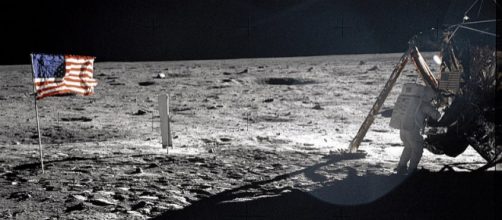Speaking on the occasion of the 45th anniversary of Apollo 17's landing on the moon, President Donald Trump dropped hints that he would like to revive the moon missions of NASA. He wants the moon to become a stepping stone to explore even deeper into the cosmos.
New Zealand Herald reports that Trump wants the United States to once again take the lead in exploring not only the moon but also the cosmos beyond it. He wants the space programs of NASA to be an inspiration to all of humanity.
However, he did not disclose any timeframe or the source of funding except indicating that he would be signing a new space policy and private operators would be welcome to participate by setting up joint ventures.
Exploitation of the moon
The policy outlined by Donald Trump can be interpreted as an official reversal of the Obama administration's plan of NASA which was about visiting an asteroid and flying to Mars by the mid-2030s. This reversal of policy and reviving the moon missions could be attributed to the presence of an abundance of minerals and natural resources that could attract business opportunities.
Obviously, the Trump administration wants to open its doors to the private sector. Moon Express is believed to have drawn up plans to launch a robotic lander to the moon's surface by next year. SpaceX is another interested party – it is under contract with NASA to carry out resupply missions to the International Space Station and its CEO Elon Musk has introduced the revolutionary concept of reusable rockets to reduce costs.
Bright future for space exploration
The first man to land on the moon was an American, and the year was 1969. Donald Trump wants to treat the moon as an entity that can be exploited because of its enormous wealth of natural resources. He looks at it for its business potentials and wants astronauts of NASA to return to the moon for specific moon missions that will be directed towards exploitation of its natural resources.
Given the huge costs involved, it is a sensible decision for the Trump administration to rope in the private sector. It would be a win-win situation for all because of the commercial approach. A future scenario could be areas staked out on the moon by different companies with robots working 24X7 to dig the minerals and load them in spaceships for a return to earth.
Space research will continue, but the focus could shift, and mission to Mars could lose its priority. Instead of sending humans to Mars, it would be more advisable to develop robots to dig for minerals on the moon.


